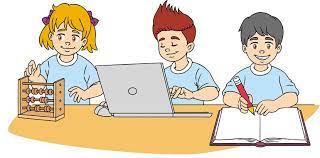Reflective teaching is a process in which teachers reflect on their teaching practices, analyze how something was taught and how the practice could be improved or changed for better learning outcomes. Points to consider in the reflection process might be what is currently being done, why it is being done, and how well students are learning. You can use reflection as a way to simply learn more about your own practice, improve a certain practice (small group and cooperative learning, for example), or to focus on a problem students are having. Let us now discuss some reflective teaching methods.
What Is Reflective Teaching;Complete Methods

Method 1: keep a diary
After each class, take some notes on what was taught and how the students responded, positive or negative. Did you understand the material? Do you need more preparation time to teach the lesson effectively? Reflect on this information at the end of the day. Keep a journal , writing down what you could do differently or what worked well.
Method 2 – Get Feedback
After a lesson or activity or at the end of class, ask students to briefly and honestly describe what they learned and what, if anything, did not work well in the lesson. Let them give their feedback anonymously. Collect the responses and make notes in your journal about your observations to improve or change your teaching practices. You can also ask a colleague whose teaching standards you admire to come into your classroom and observe a session. Ask for honest feedback and let your colleague know that your goal is to improve.
Method 3: Record your class
Install a camera to record videos or record your class. Listen or watch it all later that day and write down everything that works well and what doesn’t for your students. Are you only involving one or two students and not trying to engage the group? How do you interact with students? Write down what you want to improve and how you will do it.
lesson summary
Reflective teaching is a process through which teachers analyze their instructional practices. Through reflective teaching, teachers can understand which areas could be improved or changed for better learning outcomes. Some reflective teaching methods include keeping a journal, soliciting feedback from students and peers, and recording an actual teaching moment.
Different views of teaching give rise to different views about reflection or reflective teaching.
Reflective teaching
At this level teachers become concerned with goals, the connections between principles and practice, the assumptions that underlie their practices, and the value of their goals.
Critical reflections: reflective teaching
At these level teachers become concerned with issues beyond the classroom, so that moral and social issues such as equity and emancipation can inform their reflections on classroom practices. [Brookfield (1995:8) goes a step further by suggesting that reflection should not be considered as critical unless it serves two distinctive purposes: the first being to understand the power relationships in teaching and the second being to question the assumptions and practices that ‘seem to make our lives easier but that actually end up working against our long term interests:) Zeichner and Liston (1987) addressed this issue slightly differently by focusing on criteria for reflection rather than levels of reflection.
Reflective teaching involves teachers systematically reflecting on their work and its impact on students. The table format can outline the main elements, actions, and considerations involved in reflective teaching.
Here’s an example of how you might structure such a table:
| Component | Description | Actions for Teachers | Considerations |
|---|---|---|---|
| Self-Assessment | Evaluating one’s own teaching practices and effectiveness. | – Keep a teaching journal.<br>- Review and assess lessons. | – Be honest and open to self-critique. |
| Student Feedback | Gathering input from students about the learning experience. | – Conduct surveys or focus groups.<br>- Encourage open dialogue. | – Ensure anonymity and honesty in feedback. |
| Peer Observation | Having colleagues observe and provide feedback on teaching. | – Invite peers to observe classes.<br>- Engage in post-observation discussions. | – Foster a culture of constructive feedback. |
| Professional Development | Engaging in ongoing learning and training. | – Attend workshops and seminars.<br>- Read current educational research. | – Stay updated with educational trends and research. |
| Goal Setting | Setting specific objectives for improvement. | – Identify areas for growth.<br>- Develop an action plan. | – Set realistic and achievable goals. |
| Collaborative Reflection | Reflecting with other educators to gain broader perspectives. | – Participate in teacher learning communities.<br>- Share experiences and strategies. | – Value diverse viewpoints and experiences. |
This table is a basic framework and can be adapted or expanded based on specific needs or contexts. Reflective teaching is a dynamic process, and this table can serve as a starting point for educators to develop their reflective practice.
